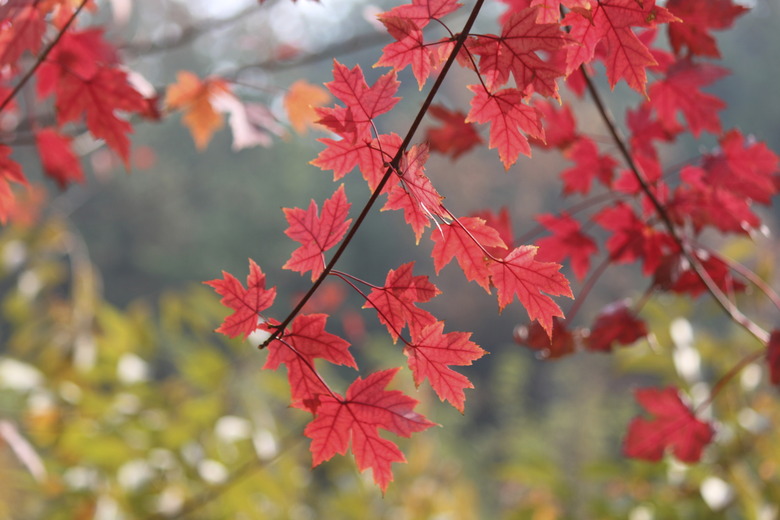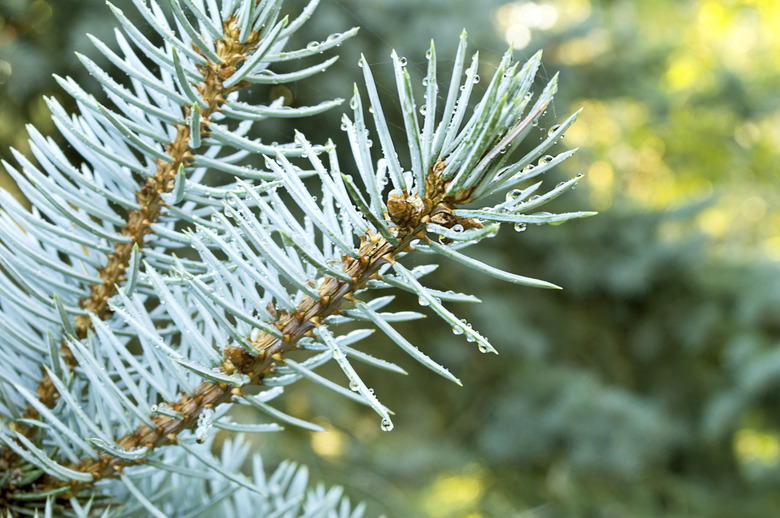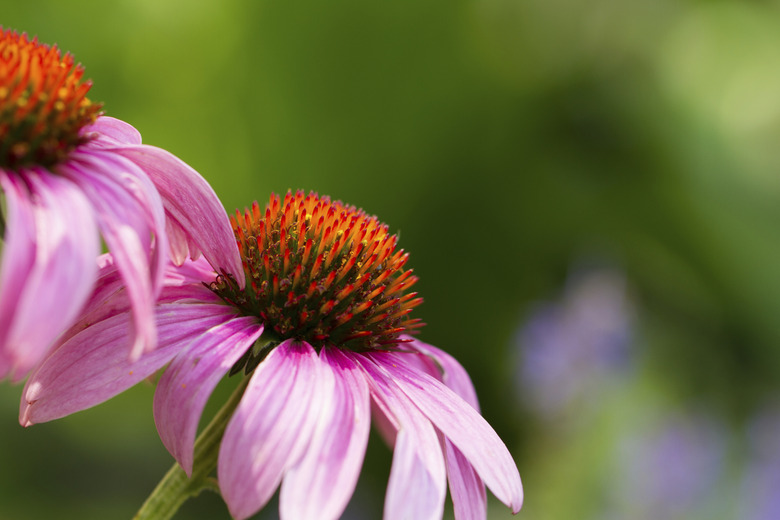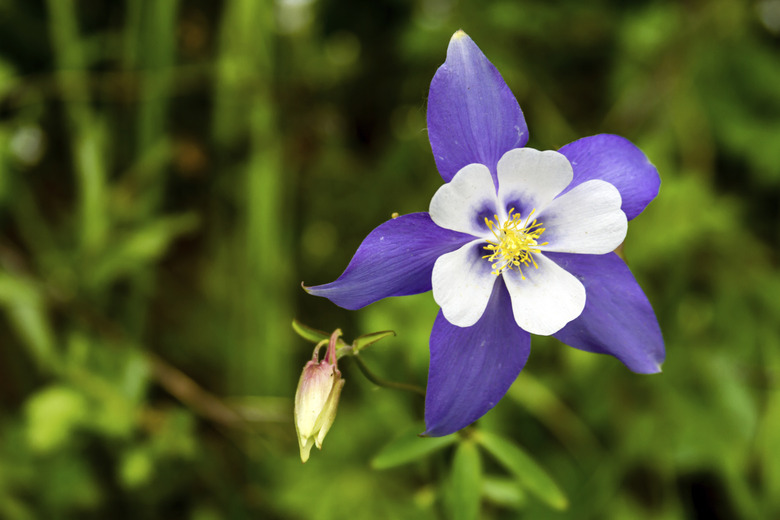Good Plants For Landscaping In Kentucky
If you live in Kentucky and want to add plants to your garden, it's important to choose the best types for your area so you aren't disappointed. Using trees and other plants native to Kentucky helps ensure a good outcome, but you can also use non-native plants, provided you pick those able to grow in U.S. Department of Agriculture plant hardiness zones 6 through 7, which encompass the entire state.
Step 1
Kentucky's cold winters may have temperatures that dip to 0 degrees Fahrenheit or slightly lower. Choose cold-hardy native trees for best results, including the 45-foot red maple (Acer rubrum) and Eastern redbud (Cercis canadensis), which grows to 30 feet tall. Both are good shade trees that grow quickly and have a naturally pleasing form. The maple grows in USDA zones 3 through 9, while the redbud grows in USDA zones 4 through 9. Among the many native Kentucky shrubs, spicebush (Lindera bezoin) is a good choice for USDA zones 4 through 9 and grows 10 feet tall and wide. It's a trouble-free shrub that produces yellow flowers in spring and showy berries in fall that attract birds.
Step 2
Other Trees and Shrubs
Step 1
Many nonnative trees and shrubs also thrive in Kentucky, doing well in its climate. These include evergreen trees, such as the Colorado blue spruce (Picea pungens), which grows in USDA zones 2 through 7. It grows 30 to 60 feet tall and is easily recognized by its bristly, blue-green or silvery-blue needles. Many flowering trees also thrive in Kentucky, even exotic types, including Japanese tree lilac (Syringa reticulata), which grows in USDA zones 3 through 7. Japanese tree lilac produces showy white flower clusters in midsummer that perfume the garden. It grows 20 feet tall and wide, and thrives in sun. Many non-native shrubs can also do well in Kentucky. Examples include the border forsythia (Forsythia x intermedia), a tough early-spring bloomer that reaches 8 feet tall and grows in USDA zones 6 through 8, and panicle hydrangea (Hydrangea paniculata), a summer-bloomer that grows in USDA zones 3 through 8.
Step 2
- Kentucky's cold winters may have temperatures that dip to 0 degrees Fahrenheit or slightly lower.
- Among the many native Kentucky shrubs, spicebush (Lindera bezoin) is a good choice for USDA zones 4 through 9 and grows 10 feet tall and wide.
Native Perennials
Step 1
For a perennial bed or border, choose Kentucky natives for a better chance of success, and let the flowers go to seed to help feed birds and other wildlife. Good choices include purple coneflower (Echinacea purpurea), a 3- to 5-foot-tall plant that has long-lasting flowers in summer and early fall, and Joe Pye weed (Eupatorium spp.), a plant with domed pink flowerheads in summer that attract butterflies. Both plants prefer full sun and are especially easy to grow. Coneflower grows in USDA zones 3 through 8, while Joe Pye weed grows in USDA zones 3 through 9.
Other Perennials
Step 1
Several perennials that aren't native plants can also thrive and grow for many years in a Kentucky garden. Smart choices include the hybrid columbine (Aquilegia x hybrid), a 3-foot-tall spring bloomer with flowers in many colors. It grows in USDA zones 3 through 9. Chinese astilbe (Astilbe chinensis), which grows in USDA zones 4 through 8 and has plumed flowers in white, pink or purple. Columbines bloom best in sun, while astilbes prefer partial to full shade. Bellflower (Campanula carpatica) also does well in Kentucky, growing in USDA zones 4 through 7. It has bell-shaped blue, white or purple flowers that cover the plant for several months in summer. It grows in sun or shade.
Step 2
Step 3
- For a perennial bed or border, choose Kentucky natives for a better chance of success, and let the flowers go to seed to help feed birds and other wildlife.
- Chinese astilbe (Astilbe chinensis), which grows in USDA zones 4 through 8 and has plumed flowers in white, pink or purple.
References
- North Carolina Cooperative Extension: Acer Rubrum
- North Carolina Cooperative Extension: Cercis Canadensis
- Fine Gardening: Spicebush
- Missouri Botanical Garden: Picea Pungens
- North Carolina Cooperative Extension: Syringa Reticulata
- North Carolina Cooperative Extension: Forsythia x Intermedia
- Fine Gardening: Panicle Hydrangea
- Fine Gardening: Purple Coneflower
- Fine Gardening: Joe Pye Weed
- University of Kentucky Horticulture Department: Kentucky Garden Flowers



